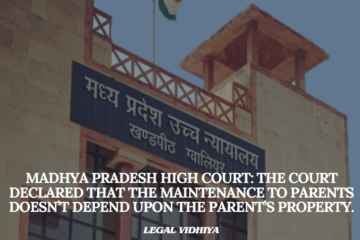
In a recent landmark judgment, the Supreme Court of India, led by Justice Vikram Nath, delivered a crucial ruling in Civil Appeal No. 9941 of 2016, highlighting the principles of judicial discipline and the binding nature of precedents.
The case involved Mary Pushpam as the appellant, challenging the judgment of the Madras High Court in the second round of litigation. The core issue revolved around whether the High Court’s earlier judgment in 1990 covered the entire disputed property of 8 cents of land or only the constructed portion.
Justice Nath began by emphasizing the doctrine of merger, asserting that when an appeal is decided by a higher forum, its decision supersedes and merges with the decision of the lower court. The 1990 judgment, according to Justice Nath, was final and binding, creating a legal backdrop for the case.
The judgment delves into the importance of judicial discipline, asserting that a coordinate bench should follow the decision of an earlier coordinate bench. Justice Nath emphasized that dissent or disagreement should be expressed by referring the matter to a larger bench rather than contradicting the established legal position. This principle, rooted in maintaining the decorum of the hierarchy of courts and tribunals, ensures consistency and certainty in judicial decisions.
Analyzing the High Court’s 2009 judgment, Justice Nath scrutinized the deviation from the 1990 decision. In the second round of litigation, the High Court restricted the decree to the constructed portion, contrary to the earlier understanding that the entire 8 cents of land was in dispute. The judgment was criticized for violating the principles of judicial discipline, as the lower court cannot contradict judgments of higher courts.
The appellant’s argument was centered on the 1990 judgment, which repeatedly noted that the suit property comprised 8 cents of land, not just the building structure on it. The appellant contended that the High Court’s 2009 judgment contradicted the established legal position, leading to a breach of judicial discipline.
The respondents, on the other hand, argued that the judgment of the Trial Court and First Appellate Court in the first round of litigation clearly stated that the case pertain only to the constructed portion where the mother of the appellant was residing, not the entire 8 cents purchased by them. They claimed that the High Court committed a bona fide error in recording the suit property as 8 cents along with constructions standing over it.
Justice Nath’s analysis rejected the respondents’ argument on both factual and legal grounds. The judgment pointed out that the suit for possession lacked a clear description of the property, making it liable to be dismissed on the ground of identifiability. Additionally, the argument that the construction by the appellant did not cover the entire 8 cents contradicted the very basis for the respondents’ claim to possession.
In conclusion, Justice Vikram Nath’s judgment in Civil Appeal No. 9941 of 2016 serves as a significant precedent reaffirming the doctrine of merger and stressing the need for judicial discipline in the Indian legal system. The decision underscores the hierarchical nature of legal judgments, promoting consistency, and ensuring that lower courts adhere to the rulings of higher courts. This landmark judgment is poised to have a lasting impact on how the Indian legal system approaches and respects its own precedents.
CASE NAME- Mary Pushpam vs. Telvi Curusumary & Ors.
(Civil Appeal No. 9941 of 2016)
ARUSHI MENGI, a 2nd year student at The Law School, University of Jammu, an intern under Legal Vidhiya.
Disclaimer: The materials provided herein are intended solely for informational purposes. Accessing or using the site or the materials does not establish an attorney-client relationship. The information presented on this site is not to be construed as legal or professional advice, and it should not be relied upon for such purposes or used as a substitute for advice from a licensed attorney in your state. Additionally, the viewpoint presented by the author is of a personal nature.




0 Comments